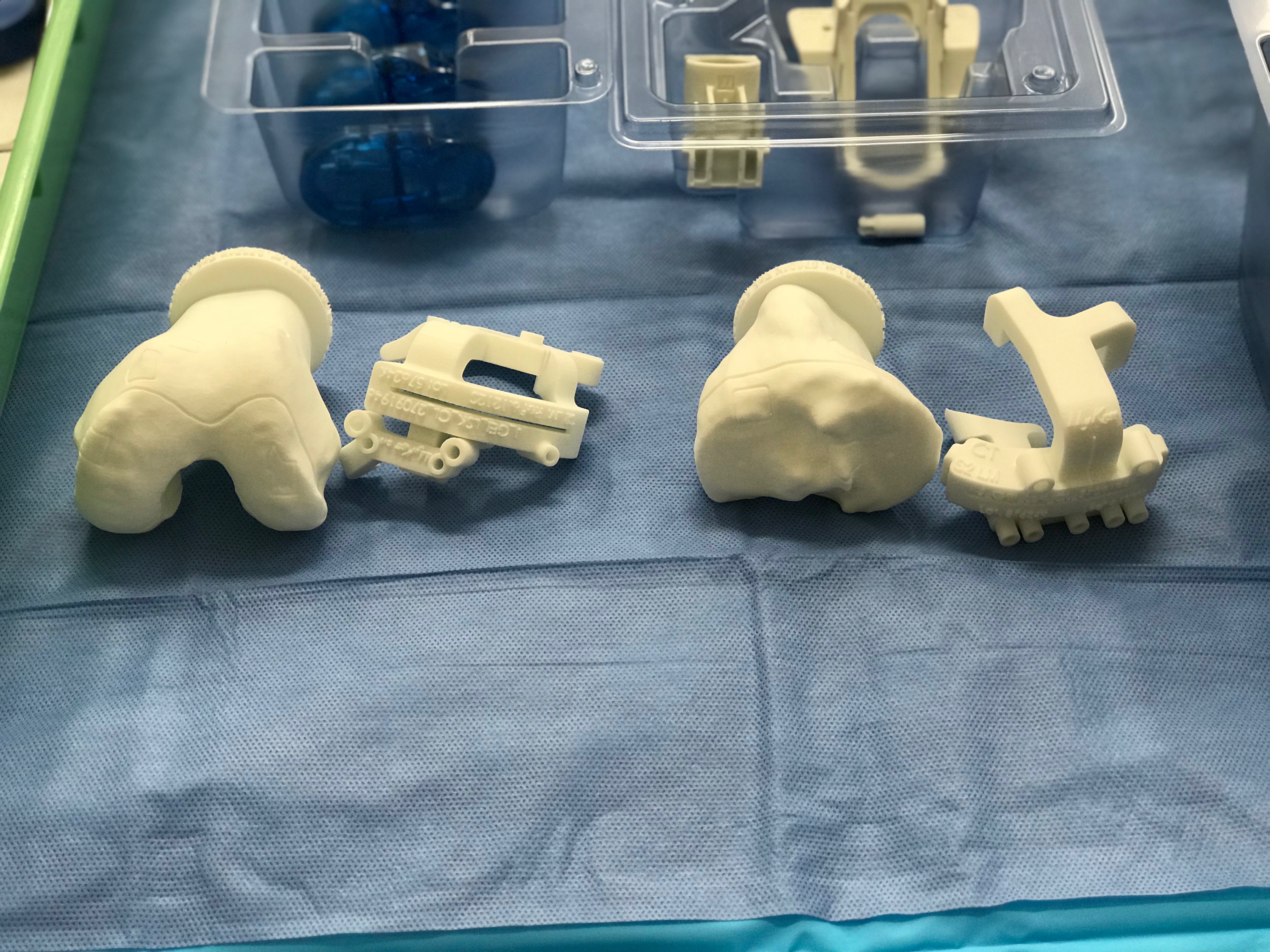
Total Knee Replacement

Adelaide Orthopaedic Surgeon – Dr Chien-Wen Liew
Do I need a total knee replacement?
Total Knee replacements are performed when arthritis in the joint worsens. Arthritis is a condition caused by many factors, which result in the destruction or loss of cartilage from inside the knee joint. When the cartilage is lost, there is no recovery of the same type of cartilage in the knee. When enough cartilage is lost, the joint fails to absorb the shock and the knee becomes painful due to the release of inflammatory products in the knee as the bone is exposed.
The treatment of arthritis in the knee differs from patient to patient. In general, once the pain affects normal activities, and is a constant problem, then it should be treated with surgery. In the lead up to surgery, there are multiple things that can be done to diminish the pain from arthritis. There is nothing that we can currently do to reverse the degeneration of cartilage. Some newer modalities such as stem cell research may prove to be valuable, however this looks to be a future possibility only. In general an orthopaedic surgeon will ask several questions to determine if it is the correct time to be performing knee replacement surgery. This includes:
- How long the pain has been there, and where is it located?
- Do you have night pain?
- What pain medications are you on?
- How far can you walk?
- What treatments have you had on your knee so far?
- Are there any clicking, locking or catching sensations?
Often you general practitioner will manage knee arthritis until it is referred to an orthopaedic surgeon. In Adelaide, South Australia it is often the case, that a General Practitioner will give medication such as antiinflammatories to diminish the pain from arthritis. As pain from arthritis is due to inflammation, it is often best treated with products such as Nurofen. It is advisable to obtain medication advice from your doctor prior to taking any new medications. A GP will often organise an Xray (Weight bearing) of your knee to see what the joint looks like in relation to the amount of joint “space” left as well as the alignment of the joint in relation to your hip and ankle. As the cartilage degenerates, often the alignment of the knee changes and you develop a change to the angle between your hip, knee and ankle. This is restored after replacement surgery back to close to 180 degrees (Straight).
Physiotherapy is useful for maintaining the muscle tone and ligamentous stability of the knee. It will not degrade the knee further and can actually help with the pain, as activity increases. Weight loss is also an important part in the pre-operative and post operative treatment of knee arthritis.
Once all the cartilage is lost, X-rays will often show a deformity in alignment as well as a reduction of joint space. The most common type of deformity is a “Varus” deformity of the knee. This occurs because the cartilage usually wears away first on the inside (Medial) aspect of the knee which changes the Hip Knee Ankle alignment. It is generally thought that this alignment is necessary to be obtained during total knee replacement in order to have success over a long period of time.
How does Dr Liew perform a total knee replacement?
Patient specific Instruments can help in achieving this alignment as all of the calculations are done prior to the operation. No alignment guides are necessary during the operation (They are often still used to check the patient specific instruments), and it has been shown in multiple studies to have reproducible results. Patient specific instruments are made by taking an image of the knee and reproducing it on a computer, similar to how blueprints and prototypes are made (i.e. using a program like AutoCAD). This is highly accurate, and can identify what is necessary to obtain a good alignment. If the patient specific guides do not fit well during surgery, the conventional method is used, however this is rare (<.1% in practice). It is best to do whatever method will provide the most accurate positioning of the implant during surgery which means that occasionally, conventional methods are used when the blocks do not fit well. This can occur if too long a timespan has passed since the creation of the blocks. The patient specific blocks have an expiry date on them, which relates to how much the knee will change over time.
Current controversy exists about the reproducibility of the various techniques. In general, there are 3 main techniques: Conventional (Using rods that are inserted into the thigh bone – femur, and/or the shin bone – tibia); Computer navigated (Using pins that inserted at distant sites from the knee replacement which are mapped with a special computer that has a special camera on it – similar to robotic technology); or Patient Specific Instrumentation (Using a computer to design instruments that are specifically made for only one patient’s knee).
Dr Liew performs all knee replacement utilising Patient Specific Technology using a Kinematic Protocol. This is an extremely important philosophy and one that requires accurate technology to align a knee to MATCH the native pre-arthritic alignment of the knee. This means that no ligaments, capsule or tendons/muscles need to be released/cut to balance the knee, as these structures are left intact, as the knee is aligned to match the normal knee. This means that every single knee is cut individually, and few knees are alike.
In the normal population, many people are bow legged, or knocked knees – or their feet rotated out or inwards. In the past, all knees were aligned with the goal of making each knee straight, and the foot rotated 10 degrees. However, all knees are different, and often when a patient has a native alignment which is not perfectly straight (most people do not have a perfectly straight knee), releases need to be performed to balance the knee after the prosthesis has been placed. This can cause the knee to feel unnatural. Dr Liew utilises kinematic (or native) alignment philosophies which make the knees feel extremely natural, aiming to make each knee “forgotten” after the knee replacement rehabilitation is completed.
Single use instruments are used to improve patient outcomes from surgery by ensuring that cutting blocks are brand new each time, and have little chance of deformity over time, or infection due to failure of sterilisation. This is used in each and every single knee replacement and have been our standard practice since 2016.
What happens after a total knee replacement?
After surgery for knee arthritis, patients are often walked the day of, or day after surgery. Dr Chien-Wen Liew likes his patients to walk the day of surgery if possible (subject to anaesthetic, and patient comorbidities). The usual stay in hospital for a total knee replacement is 3-4 nights. After this time, patient’s are usually fit enough to return home to continue healing.
All dressings should remain dry for the first 14 days, to avoid any increase chances of infection. There is no swimming allowed (including hydrotherapy) until 1 months post operatively. White compression stocking (called TED stockings) are used for the first 14 days post operatively, in addition to a blood thinner (variable depending on your medical conditions).
Driving can commence once you are off the heavier pain medications (such as Palexia or Endone), and is achievable at about 2-3 weeks post operatively in 80% of our patients.
The first 6-8 weeks is focussed on swelling reduction and range of motion exercises under the guidance of your local physiotherapist.
For more information on total knee replacements and patient specific instrumentation, contact (08) 7099 0188.
Thankyou for visiting this website. Please note that the information held within this site and on this page are for educational purposes only. Please consult your doctor or health professional always prior to considering any medical therapy or intervention. If you notice an error on this site, please use our contact form to let us know so we can rectify any issues. All information and graphics on this site are the property of Sempire Designs.
